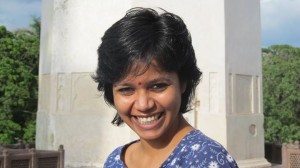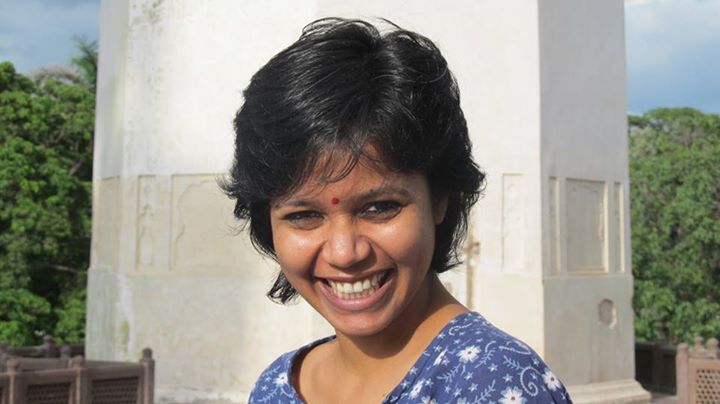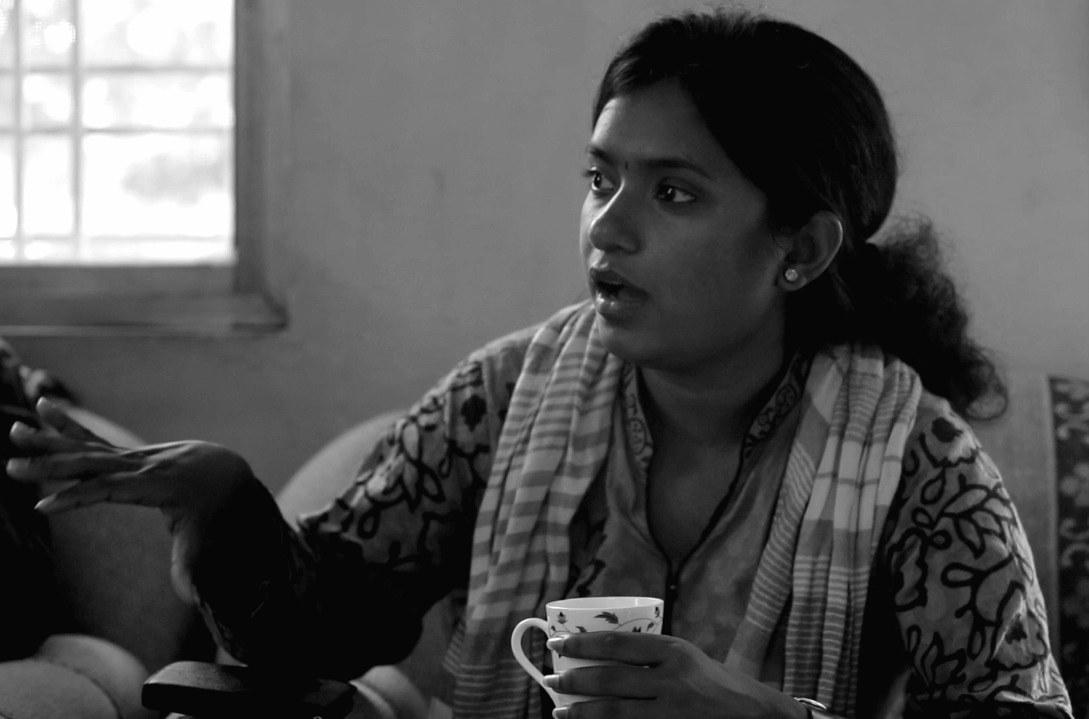Asha Singh
This article first appeared in Round Table India (Hindi) here, and has been translated by Rahi Gaikwad.
 I am not a Dalit, but since childhood I was aware that I was not from a ‘good caste’. I spent my childhood (in the 90s) in a coalfield town of Singrauli in a cheap housing colony, where my father worked as a security guard. This barrack-like colony is at the tail end of the township, which was also called ‘lower colony’. The coalfield’s sweepers, security guards, drivers lived here in one-room government quarters, which initially lacked toilet and bathroom facilities; we would go to the open ground at the back.
I am not a Dalit, but since childhood I was aware that I was not from a ‘good caste’. I spent my childhood (in the 90s) in a coalfield town of Singrauli in a cheap housing colony, where my father worked as a security guard. This barrack-like colony is at the tail end of the township, which was also called ‘lower colony’. The coalfield’s sweepers, security guards, drivers lived here in one-room government quarters, which initially lacked toilet and bathroom facilities; we would go to the open ground at the back.
My father’s government job earned me admission in a Central school, where boys and girls from Singrauli’s ‘upper colony’ also studied. My friends often told me that their mothers scolded them for going to the ‘lower colony’. When I visited the homes of my friends from ‘upper colony’ I would feel inadequate. There was no secrecy about who was from which caste. Mothers of my savarna friends were more or less educated. They dressed well and they were conversant in Hindi. My mother was illiterate; she did not know anything except Bhojpuri. I had a feeling caste was in some way related to these things.
From my father I developed a political understanding of caste. Before being a security guard, he served in the army for 15 years. In the 1971 war, young Dalit-Bahujan and other poor men from Uttar Pradesh and Bihar were enlisted in the army in large numbers. After the war, my father had the opportunity to pursue further studies. I don’t exactly know how, but his years in the army laid the foundation for my father’s political consciousness. The political changes in Bihar, namely the rise of the Rashtriya Janata Dal and Lalu Yadav, strengthened his thoughts. I had often heard the word ‘Brahmanvaad’ (Brahminism) from him. From the discussions among his friends, I also heard words like ‘jaativaad’ (casteism) and ‘bhedbhaav’ (discrimination).
Apart from this, certain incidents in daily life deepened my understanding of these concepts. While in class eleven, I took tuitions for Mathematics and Physics. My teachers often praised me in front of everybody, because I had stood first in class 10. My teacher’s father asked my caste and I told him. He refused to believe that a girl from Ahir caste had passed class 10. He said that I was lying; I was not an Ahir but a Kayastha! Further, he made the following remark with conviction: ‘Where do Ahirs educate their girls?’ I knew his observation was not completely baseless. In fact I was the only girl, not just in my family but in my village who got the opportunity to study.
Around that time, my father took me to a local convention of Sri Krishna Samiti (Yadav convention). Since I would participate in elocution competitions etc in school, my father urged me to go to the stage and say something. He greatly wished that the community would praise him for educating his children. Treating it like an elocution competition, I said something, of which I remember nothing. The audience was satisfied that a girl had spoken well, but no one was concerned about what she was saying. At that age, even I was not concerned; my aim was to only earn praise with my oratorical skills. I wanted to feel important. I could not have had a better opportunity to prove my relevance, because we were historically considered non-meritorious. I did not want to be like my mother, who could not get anything except the tag of an illiterate woman. I was desperate to step out of this illiterate-rustic world.
Gradually, I understood that the Ahir community is engaged in bettering its lot. One of the ways included proving that the character named ‘Krishna’ was from their caste and bringing together people from the community through Krishna Samiti conventions and Govardhan puja.
When I wanted the freedom to decide my course of higher education and choose a partner, I faced a lot of opposition. That’s when I understood that this Yadav convention, Govardhan puja etc were of no use to me. One question troubled me. What is the relevance of these gatherings to Ahir women? What is their role? At the Singrauli meet, I was a child staging a performance. People were happy that a Yadav had educated his daughter, but there were words of caution so that I don’t become a challenge. There is room for exception in any convention. It provides comic relief. What will happen if there are no exceptions and women dominate Yadav conventions? What will happen if girls have their own dreams instead of choosing an educational course for the sake of their father’s happiness? What will happen if Ahir girls have inter-caste marriages and don’t increase the community’s numerical strength by bearing children of the same caste? The Yadav caste is regarded as the strongest numerically.
Before I discuss the political significance of numerical strength in this article, I am pausing here to make a different statement.
My father was a first-generation literate male and matriculate for whom his daughter’s education was important, but within a certain limit. The daughter should be educated in such a manner that she should be married within the community. He educated his daughter at the cost of censure from the community. I applaud his progressiveness, because in his village nobody dreamt even this much for their daughters. His own father, that is, my grandfather, would abuse him for wanting to study further. My illiterate and landless grandfather wanted my father to work as labourer and quit useless dreams about education. For someone coming from this background, dreaming of educating his daughter, striving to provide her with all required facilities is commendable. Especially in a Bhojpuri society where even today lower caste men leave women and children behind in the villages to take care of the house while they go to cities for work. This is not the case of Bihari men who work as labourers alone. As far as I have seen, very few of Singrauli’s class-4 Bihari employees stay in the city with their wives and children and take the trouble of providing education. The aim of most others is to earn enough money to buy land back in the village. If a person from such a society compromises on this dream for the sake of his children, especially a girl-child, then this should be acknowledged. Mainly because, till the last generation you were landless and friends and acquaintances from your generation were buying farmland from the money earned from working outside instead of educating their children.
The first generation of men coming to cities and towns, those with government jobs and some time on their hand, start cultivating their political consciousness. Obviously, any organisation which transforms caste inferiority into caste greatness will become attractive. For the Ahir men, Yadav convention was one such way.
The Ahir community has a comical image. The moment you name the Ahir caste, people start thinking of cows and buffaloes and start laughing. The Ahir people are the butt of ridicule among the so-called ‘respectable and educated’ savarna circles of society. The Ahir community is probably trying to change this culturally-impoverished image and prove that they are Kshatriyas, so that they retain their caste and improve their image.
However, when I started to look for the history of Ahir conventions, when and how they started, I came across the book ‘India’s Silent Revolution: The Rise of the Low Castes in North Indian Politics’ by Christophe Jaffrelot. According to the book, the first Ahir/Yadav caste mahasabha, which was called Gop caste mahasabha, was organised in Bihar in 1912. Its primary aim was to confront the zamindars about economic and social oppression. People from the Gop castes too had to do forced labour at the houses of the zamindars. The zamindars bought their produce at prices lower than the market rate. To oppose them, the Ahir mahasabha started referring to themselves as Kshatriyas and told Ahirs to wear the Brahmin symbol of ‘janeu’. Due to this, the Ahirs had to face violence and social boycott. With these attempts began the process of brahminising and aryansing the history of the Ahir caste. This was an image building activity within the caste hierarchy, which posed a challenge to Brahmin supremacy, but never denounced it completely.
This image building activity is on even today. You will find several websites featuring Yadav conventions on the Internet. They always have a divine image of Krishna and a list of ‘important Yadav men’ and their achievements. Overall, you get the impression that a historically backward caste has made much progress. At Ahir conventions, you don’t get to read anything worthwhile about the role of women. You will find only one or two women, whose traditional and complementary roles are highlighted.
Now let’s come to the issue of numerical strength. It is obvious that being the biggest caste group is the basis for the political rise of the Ahirs. So much so that UP-Bihar is called ‘Yadav Pradesh’, because a large percentage of the Yadav population stays in this geographical area. Women from the caste have the responsibility of keeping the caste numbers high. Here I wish to cite my example. When I married a boy from a different State, caste and religion, I was told that despite being educated I could not be of any use to the State and the caste. We educated you and you betrayed us. I said I have done a PhD on Bhojpuri society, will that not benefit the State and the community? Does service to one’s caste mean that in addition to your education, you serve the men in your caste and increase caste strength by bearing their children? Secondly, the man I married is like us – a bahujan. But the people in my community could not digest this. My question to Yadav organisations and men is, if they are in favour of social justice why do they distance themselves from comprehensive definition of bahujans? Why do they want to be limited to making only a ‘political nexus’? Can you be a ‘bahujanwadi’ (believer in the welfare of all the bahujan people) only by opposing the Brahmins and improving the condition of only the men in your caste?
If you search on Google, you will know that the Rajasthan Yadav Mahasabha is working energetically for the uplift of the caste community. When Delhi University student Bhavana Yadav, who is originally from Rajasthan, had an inter-caste marriage, her family killed her (in a so-called act of honour killing). Where was the Rajasthan Mahasabha then? Was Bhavana Yadav not a Yadav for them, because she had an inter-caste marriage?
It is well-known that patriarchy is present in every organisation and caste, but I do not mean to expose the patriarchal nature of Ahir community alone, neither do I want savarna academics to use this to affirm their dominant caste theory. My intention is to ask certain questions to my caste group.
*What kind of political and social relationship do the Ahirs want with other similar backward castes and castes lower than theirs? As Dr. Babasaheb had suggested to the Maratha community, do they want to join hands with the savarnas or unite with the lower castes to end Brahminism? (See: Dr. Babasaheb Ambedkar Writings and Speeches, Vol. 17, Part 2, pp: 81-82) The Ahir community has to decide if it wants to upgrade itself within the Brahminical framework or end it by trying to follow the footsteps of the dalit-bahujan movement.
*Another question is what kind of ‘political’ relationship do Ahir men want with Ahir women? I have used the word ‘political’ with a specific intention. The familial and social relationship between Ahir men and women are because of their caste ties, but do they want to rise above caste hierarchies to become partners in the politics of bahujan and social justice, instead of the mother-sister-daughter relationships?
~~~
Asha Singh has done her PhD on ‘Bhojpuri folksongs and Women’ from Tata Institute of Social Sciences, Mumbai. She teaches ‘Gender Studies’ and was a reporter at ‘Nai Dunia’, Madhya Pradesh and ‘Lokmat’, Maharashtra.


Well done girl. Brahmin kept shudar low by keeping them out of education. only way we can get the status back is by educating ourselves. parents should be proud of the education of their children. honour killing by shudar. What honour i bet they don’t even know the meaning of the world with thousands of years of slavery they are so used to it. there are only 2 vern in modern
society either you are a user or being used, if we unite on these bases vern and caste goes.
keep it up Asha Singh. i liked your story of life and times